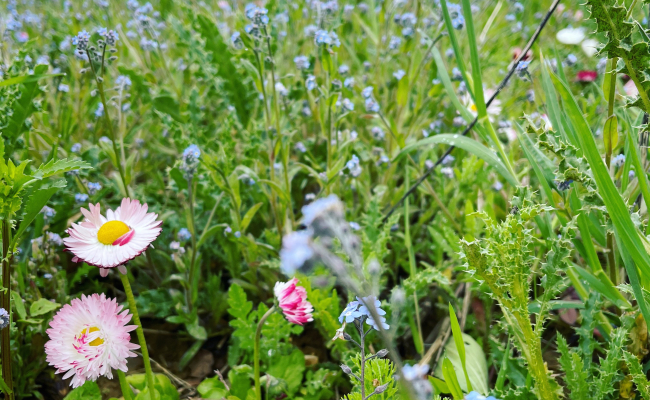Farming for a better environment
We love that many people have left their lawns uncut for No Mow May. In just a few weeks you can see the diversity that springs up. Breaking up the monoculture of a grass lawn with dandelions, buttercups, clover and other self seeding “weeds” immediately encourage insects and wildlife. What we do on the farm is pretty much the same. We do mow every now and again. One important aspect of managing the farm environment is causing disruption and disturbance in the vegetation to allow other species to flourish.
In the natural environment, a bare patch of land undergoes a succession of plant species – the first few plants create the suitable environment for the next plants. Each successive community of plant and animal species is then replaced by the next until the ecosystem reaches its final (climax) community. Encouraging biodiversity means creating a disturbance and allowing other species to grow in patches within the environment. This is why they recommend mowing a mohawk into longer grass to maximise species diversity.
Of course, we often allow our animals to create these disturbances. The cows eat by using their tongues to pull the grass up in clumps creating bare patches. The sheep eat by nibbling with their teeth. The chickens scratch at the soil. Each animal species creates a different kind of disruption in the environment. So, whilst it may not look like we have planned and planted everything; what you see is deliberate. It may not be neat and tidy all the time, but what we do is for the soil, the wildlife and for the environment because ultimately, its not about us, its about creating a better environment for the future.

